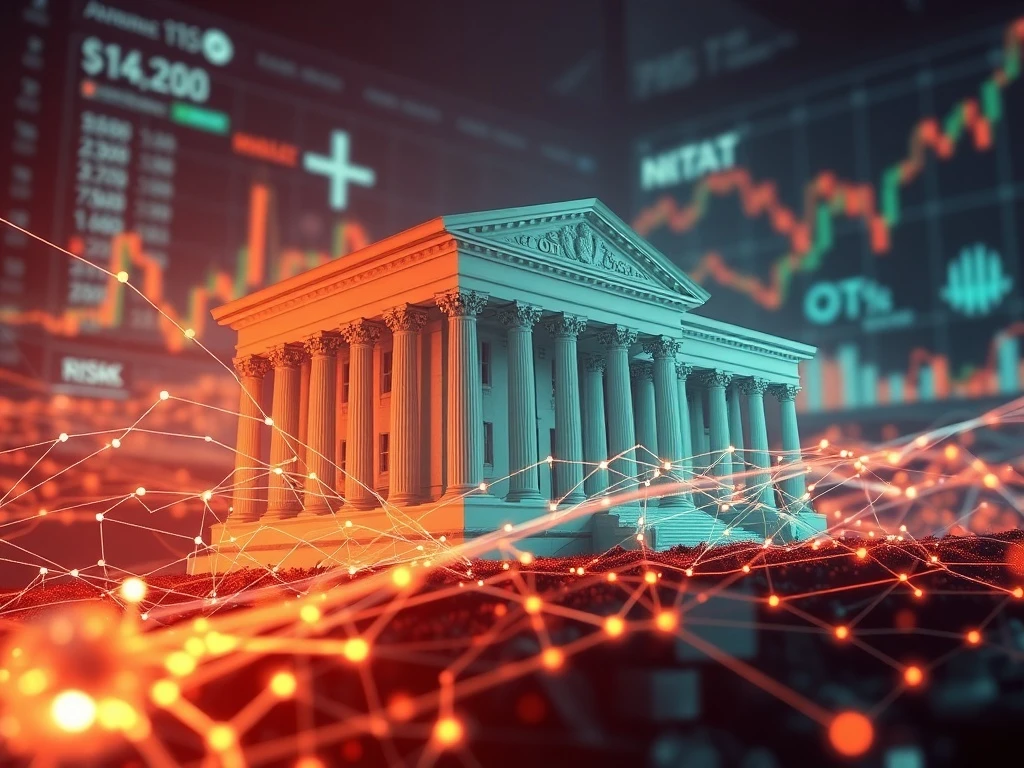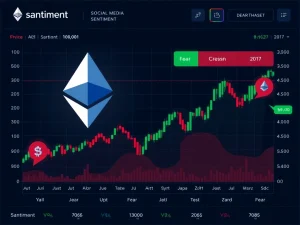Tokenized US Treasurys: Perilous New Frontiers in Crypto Collateral

The world of finance is rapidly evolving, with the convergence of traditional assets and blockchain technology creating unprecedented opportunities and challenges. At the forefront of this shift are Tokenized US Treasurys, digital representations of government debt on the blockchain. While offering enticing yield and accessibility, their increasing adoption as collateral in the crypto space is raising significant questions about new avenues of risk. Are we witnessing a financial revolution, or are we inadvertently exposing the decentralized ecosystem to unseen dangers?
What Are Tokenized US Treasurys and Why Do They Matter?
Tokenized US Treasurys represent a groundbreaking step in bridging traditional finance (TradFi) with the blockchain. Simply put, they are digital tokens that represent ownership claims to real-world assets (RWA), specifically US government debt. This innovation allows investors to gain exposure to stable, yield-bearing assets directly on-chain, offering an alternative to traditional money market funds. The market for these tokenized assets has surged, nearing $7.4 billion, reflecting a strong demand for on-chain access to reliable returns. This process transforms illiquid or traditionally complex assets into divisible, transferable digital tokens, enhancing liquidity and accessibility. It’s a key component of the broader Real-world assets (RWA) tokenization trend, which aims to bring a vast array of tangible and intangible assets onto the blockchain.
Unveiling the Hidden Dangers: Navigating DeFi Risks
While the allure of yield and accessibility is strong, the growing integration of Tokenized US Treasurys into the decentralized finance (DeFi) ecosystem introduces a complex web of new DeFi risks. Moody’s, a leading rating service, highlights that even low-risk assets like short-term liquidity funds carry inherent risks, which are amplified when tokenized. The novel technology itself adds layers of potential vulnerability. These risks are not merely theoretical; they can manifest in significant ways, particularly when these tokenized assets are used in leveraged trading.
Key risk vectors include:
- Credit Risk: The risk that the underlying issuer (the US government) defaults on its debt, impacting the value of the tokenized asset.
- Interest Rate Risk: Fluctuations in interest rates can decrease the value of existing bonds, leading to collateral value erosion.
- Liquidity Risk: While tokenization aims to improve liquidity, sudden market downturns or platform-specific issues could lead to illiquid markets for these tokens.
- Geopolitical Risk: Global events, shifts in de-dollarization trends, or changes in foreign policy can directly impact the perceived safety and value of US debt.
- Fiscal Policy Risk: US government spending and borrowing policies can influence bond yields and investor confidence.
- Technological Risk: Smart contract vulnerabilities, oracle failures, or blockchain network issues could compromise the security and functionality of tokenized assets.
- Leverage Amplification: The use of tokenized Treasurys as collateral in leveraged trading means that small declines in their value can trigger cascading liquidations across DeFi protocols.
Crypto Collateral: A New Frontier for Leverage?
The emergence of Tokenized US Treasurys as a form of crypto collateral marks a significant development in how leverage is accessed within the digital asset space. Platforms like Deribit and Crypto.com have been early adopters, allowing users to post tokenized US Treasury funds, such as BlackRock’s BUIDL fund, to back their leveraged positions. This allows traders to gain exposure to volatile crypto markets while leveraging what is traditionally considered a low-risk asset.
However, this convenience comes with inherent dangers. Leveraged trading operates on loan-to-value (LTV) ratios. If the value of the posted collateral—in this case, tokenized Treasurys—drops below a predetermined threshold, traders face automatic liquidation or margin calls. The US Treasury itself has cautioned that tokenization could bridge asset volatility, allowing ‘deleveraging and fire sales [to] rapidly spread across assets’ in times of stress. This interconnectedness means that issues originating in traditional bond markets could quickly spill over into the crypto ecosystem, potentially triggering widespread instability.
Beyond Treasurys: Navigating Market Volatility with Alternative RWAs
The increasing awareness of the various risks associated with Tokenized US Treasurys, particularly in the context of broader US fiscal stability and geopolitical tensions, is prompting a diversification among investors. As bond yields react to proposed policies, and concerns about the US government’s creditworthiness grow, the demand for alternative, relatively stable Real-world assets (RWA) is rising. These alternatives offer different risk profiles and potential benefits in times of market volatility.
Examples of such alternative tokenized RWAs include:
- Tokenized Gold: Often seen as a safe-haven asset, tokenized gold provides on-chain exposure to the precious metal. It can serve as a store of value or be used as collateral for loans, potentially even generating yield if lent out. The market for tokenized commodities, including gold, has seen rapid growth, exceeding $1.5 billion in market capitalization.
- Tokenized Real Estate: This offers access to property ownership on-chain, providing potential for cash flow income from rentals. It can also be used as collateral, opening up new financing avenues in DeFi.
- Energy-Backed Commodities: Tokenizing assets like oil or natural gas could provide exposure to energy markets, diversifying portfolios and offering different risk-return characteristics.
These alternative tokenized assets aim to provide investors with more robust options for parking capital and securing loans, especially when traditional financial instruments face headwinds.
Safeguarding the Future: Essential Risk Management in a Converging World
As traditional finance and decentralized finance continue their inevitable convergence, robust risk management and increased regulatory oversight become paramount. Nick Jones, founder of Zumo, emphasizes the need for vigilance to protect against structural shocks. Transparency and clear regulatory frameworks will be key to mitigating the inherent variables in this evolving landscape.
For investors and platforms engaging with tokenized assets, this means:
- Diversification: Do not rely solely on one type of tokenized RWA. Explore a range of assets to spread risk.
- Due Diligence: Thoroughly understand the underlying asset, the tokenization process, and the smart contract risks involved.
- Monitoring LTVs: For leveraged positions, maintain healthy loan-to-value ratios and be prepared for margin calls.
- Regulatory Awareness: Stay informed about evolving regulations concerning tokenized securities and digital assets.
- Platform Security: Choose reputable platforms with strong security measures and a proven track record.
The journey of tokenized assets is just beginning. While Tokenized US Treasurys have opened the door for institutional capital into on-chain finance, their increasing use as crypto collateral in leveraged trading underscores the need for careful consideration of new DeFi risks and the potential for increased market volatility. The future of Real-world assets (RWA) tokenization lies in navigating these complexities with foresight, robust frameworks, and a commitment to transparency, ensuring that innovation leads to stability, not systemic vulnerability.
The tokenization of US Treasurys marks a significant milestone in the evolution of digital finance, offering unprecedented access to traditional assets on the blockchain. However, as these assets become deeply embedded in the leveraged trading landscape of DeFi, they introduce a complex array of new risk vectors. From geopolitical shifts and fiscal instability to the inherent challenges of smart contract technology, the interconnectedness of TradFi and DeFi demands heightened vigilance. The path forward requires a proactive approach to risk management, regulatory clarity, and a continued exploration of diversified real-world asset tokenization to build a more resilient and secure financial future. The promise of tokenization is immense, but so too are the responsibilities that come with it.









